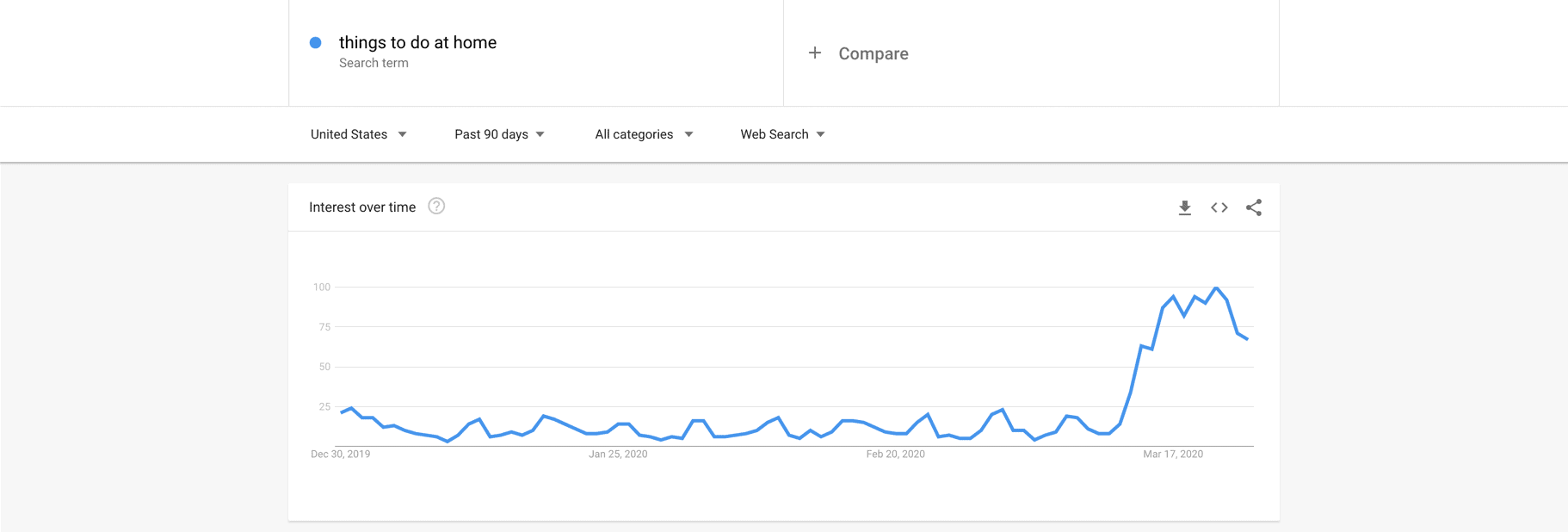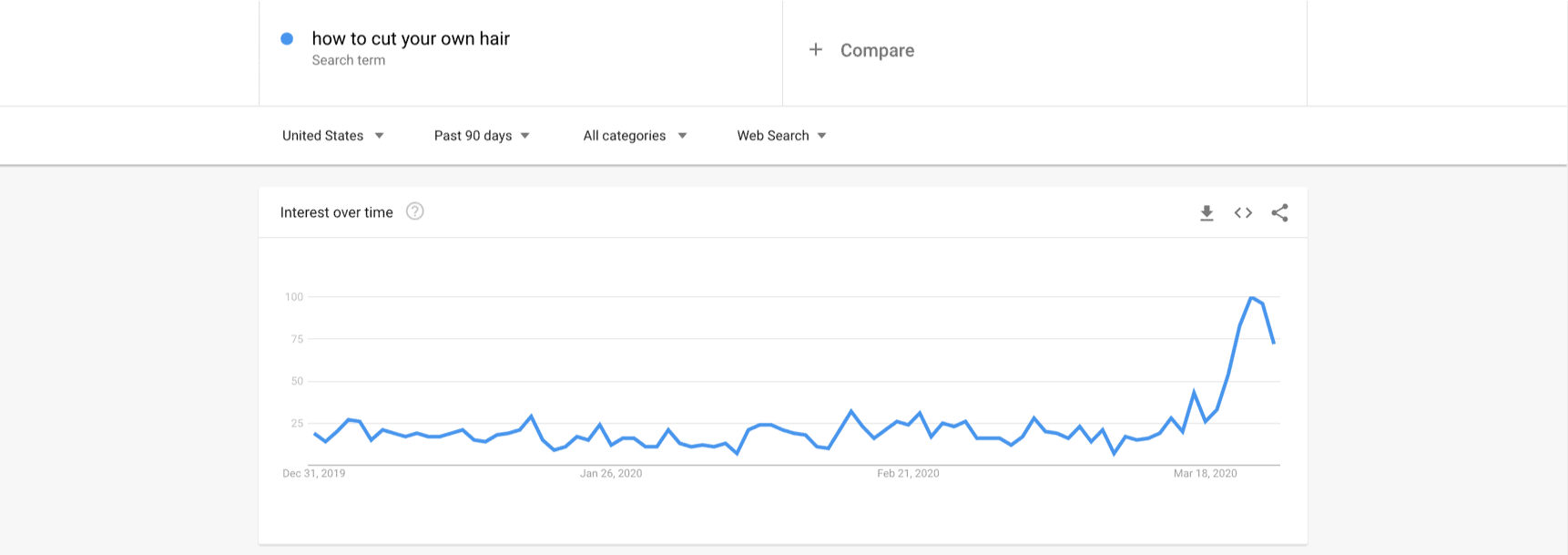Now that families and workers are stuck at home and spending more time browsing the web, it’s important to have a content strategy that fits into this new landscape.
While not every brand needs to interject themselves into the conversation on COVID-19, others like those in personal finance or health insurance, have a duty to inform users of changes and updates in response to this crisis.
As we all navigate through this challenging time, some brands have stepped up to provide helpful and creative content for their users.
We’ve put together three main tips for content marketing during the coronavirus pandemic: providing alerts, developing content hubs, and creating new content.
Provide Status Updates
One of the main things that all sites should be doing is looking out for their users. During this crisis, one of the best ways to alert users of important information on your homepage is using a banner above or below the navigation.
If you have users that are affected by COVID-19, they should easily know where to find the information that they need to know.
For example, here is a shot of Apple alerting their users about important retail store information during COVID-19.
Other large industries, like insurance, also need to step up in times of crisis like this to let users know how they are protecting their health and well being. On StateFarm’s homepage, they also have an alert bar that drops down to direct users to the most important issues like late payments or filing claims.
With that out of the way, we can dive into the actual content that you might have and how/where to use it strategically on your website.
Develop Specialized Content Hubs
If you already have content that exists (or are rapidly creating it), you should organize it into a hub page for users.
One of the main companies poised to come out of this in a big way is the conference call software, Zoom, so we can use them as an example.
With so many new users, young and old, there is a new need to educate the masses on using the program to connect with work and loved ones. (If you need a laugh, check out Zoom Fails on Twitter.)
If you visit their site, they direct you to a COVID-19 hub page full of tutorials and demos, as well as a full library of content around working remotely, educating using Zoom and hosting virtual events.
Another site that has done a great job of putting together a hub page is TurboTax. Given that taxes are something that affects everyone in the country and have been greatly affected by COVID-19, there is clearly a need for information around the topic.
TurboTax has a nice alert that directs users to a collection of important articles about filing taxes.
Headers and Title Tags for COVID
You shouldn’t be as concerned with tying these posts and hub pages to search volume, though you’ll most likely see search volume develop for some of these general topics.
For example, since this is normally tax time, when looking at Google Trends, “coronavirus taxes” has been trending up, and the TurboTax hub page mentioned above is ranking for that keyword.
You can loosely align to keywords but don’t try to force anything. This isn’t an opportunity to keyword stuff. Remember, you are trying to help, not take advantage of the situation.
Consider the Site Architecture
You should consider placing your new and/or more topical pages higher in the site structure so that they rank better.
Furthermore, based on the duration of this current situation, some sites might even need to consider changing out some linked content and removing some of the less valuable/relevant content from the navigation and footer area of their site. Additionally, some content may now be less relevant and be worth putting deeper in the architecture in exchange for more valuable content.
One suggestion would be to look at changes in traffic to content on your site from February to March. There may be non-obvious content that spikes in searches that are worth updating or pushing higher in your architecture.

So, what if you don’t have any content that fits this situation?
Create New Content for COVID-19
Creating new content may require quick turnaround and creative thinking, but for most businesses there is an opportunity to reflect on how your users may be affected by COVID-19.
This might mean that you have to pause current content in its tracks and work on a brand new post that interrupts your current content schedule.
While this content may have a quick turnaround, it doesn’t mean the quality should suffer. In fact, this is the time when it’s even more important to stand out. Since, most brands understand the need to create content around COVID-19, there will be a lot of noise.
Here are some brands that are getting great content together that goes above and beyond a typical blog post. (There is a lot of great, helpful content coming out of government sites, but we’ll skip those for now and focus on brands.)
Delish, cooking/recipe site, put together this guide to hosting a virtual dinner party. They do a great job of integrating helpful information while still leaning into their core offerings (recipes).
It’s also built out a little more than a standard blog post format:
Visual Capitalist, a site that exclusively shares visual information, mapped out the history of pandemics. Instead of a typical timeline, they went 3D and used some creative visuals to show the fatality rates of each pandemic. This currently has over 480 LRDs.
These are just a few of the many great posts out here. Next we’ll walk you through finding your own.
Finding Relevant Content Ideas
There are many ways to get inspiration for content, both search driven and content purely designed to get links and social shares.
Aside from the bigger issues, there are new, smaller problems that people are facing now that they are locked indoors. Like this topic on how long does it take food to spoil from Kitchen Cabinet Kings.
Here are four ways to find ideas:
1. Find Topics Publishers Are Covering and Visualize Them Better
Publishers are great at covering trending topics and news quickly, but some lack the resources or have design restrictions, making their visuals very underwhelming.
Look for opportunities where their under-designed topics could fit into your brand or ways to elaborate on topics that are trending.
For example, this post from Realtor helps tell their readers some living room projects to tackle when social distancing. Unfortunately, it uses very uninspiring stock photos and doesn’t tell you how to do any of the projects. This is a great opportunity for a brand in the DIY or home decor industry to step up.
Another example is this list of necessary broadband connection speeds when working from home uses screenshots from sites, and only covers three sites. They could/should have presented the information in a more complete way and kept the design uniform throughout, such as “Your Complete Guide Connection Speeds When Working From Home”.
If you need some inspiration for how users like things visualized, head to Reddit.
2. Go to Reddit for Inspiration
For us, Reddit is a jumping off point for content ideas. We recommend checking out the top and trending posts at least once per week on three subreddits:
For instance, go to r/coolguides, and sort it by “Top Posts” in the past week or month and you’ll immediately understand how you should be visualizing graphics.
Here is a post from an artist that visualizes information from the Journal of Hospital Infection.
This has 1.2k upvotes in two days, which has a lot to do with the helpful information/topic, but it’s also designed in a clever way. Typically users love “complete” guides, and if you can lean into a unique style, you’ll win on Reddit.
(If you’re tired of COVID-19 topics, here is a complete guide about hot dogs and here is another—both trending in the past week!)
The three subreddits mentioned above are the most relevant to the kind of work that we do because they are so visual-heavy. But most industries have relevant subreddits where you can find topics based on hot topics, questions, and conversations that your users are having.
If something is trending on Reddit, it serves as social proof that a topic should work for you to cover. (Ross and I discuss this idea of social proof and using Reddit at length in our video on creating linkable content.)
Don’t copy what you see exactly. Use it as a jumping off point and iterate.
3. Find Trending Ideas with Exploding Topics
If you aren’t subscribed to Exploding Topics, I highly recommend it. Created by Brian Dean of Backlinko and Josh Howarth, it highlights keywords that are gaining visibility.
As you can see, remote work is huge, but other topics related to working from home like sick leave and remote hiring are also picking up during this time.
4. Build on Research with Google Trends and Adjust Content Scheduled
Google Trends is another trend finding tool (which Exploding Topics takes into account as well) which lets you search for a topic to see if it is trending. You’ll see some familiar trends from the past few weeks.
When inventory on hand sanitizer started to drop, people went to Google to figure out how to make their own:
When everyone was required to stay at home and practice social distancing, they got bored and Googled things to do at home:
Or, if you are in the beauty/self grooming industry, a lot of folks aren’t going to be able to get out to cut their hair:
If you don’t already have a solid idea of when certain topics in your industry are trending in every season, Google Trends is a good tool for highlighting those dates. However, social distancing measures have thrown off a lot of the normal scheduled events around the globe. So, your content schedule needs to adjust accordingly.
Use the “Past 5 years” filter to get a macro view of particular keywords. For anything that typically trends Q2 and Q3, you might need to consider adjusting them.
As an obvious example, with tax day getting pushed, these peaks and valleys that we’ve seen like clockwork are now going to peak again around July 15 (which is the new delayed deadline for doing taxes in 2020 as of publish of this post).
Consider Topic Duration
Look for keywords that are trending now that are evergreen topics for your brand and prioritize those. For example, topics like self care tips for wellness brands, staycation ideas for travel blogs, homeschooling activities for parenting sites would all work well beyond the #socialdistancing era.
On the flip side, you’ll also want to keep an eye on topics that may be trending down in the future. Give your upcoming keyword strategy a sweep to see if and how these keywords are trending. For instance, any topics that have to do with large social gatherings, like parties, sports, or other outdoor events, may take a dip in search volume.
As mentioned above, the more relevant/important the new content is to your users, the higher in the site architecture you should place it. Conversely, you might consider removing some content if it no longer stays relevant to your users.
Help, Don’t Exploit
This is hopefully obvious, but it’s worth reiterating that this isn’t a time to prey on fears. None of this content should be forced and not every brand needs to lean into COVID-19 as aggressively.
If your content can educate, inform, and generally make someone’s life a little easier or brighten their day in these dark times, then you should do it.
If you can’t find a good fit, focus your attention on helping those in need in other ways like helping your employees and other small businesses who are struggling.



















